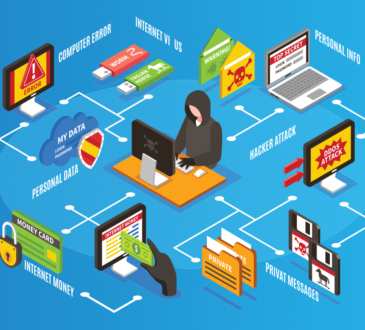
Introduction
People are trading convenience for privacy in today’s digital world – which means they share more and more information about themselves. While one-click checkouts and saved passwords can all be appreciated, that mental “autopilot” can sometimes steer us wrong. While we were all once wary of anyone asking for information about ourselves, we now assume that it’s just the cost of participation—you’re asking for my favourite book, I’m giving it to you. You’re sending me an email from my boss, and you’re getting my attention and reaction. But this autopilot is what cybercriminals and hackers from people like you and me around the world effortlessly turn into hundreds of millions of dollars every year. In this article, we will discuss types of cybercrime, what is cybercrime, cybersecurity course, and cybersecurity certification course.
What is cybercrime?
Cybercrime is a crime that either attacks a computer, a computer network, or a networked system or exploits it. Cybercrime is mainly, but not all, committed by cybercriminals or hackers who want to make money. People or organizations are carrying out cybercrime. Any cybercriminals that are coordinated are extremely technically trained and use sophisticated techniques. Others are hacking novices. In extreme cases, for reasons other than gains, cybercrime attempts to hurt computers. This may be political or personal.
What are the different types of cybercrime?
- Hacking: Hacking involves the partial or full acquisition within a system, network, or website of certain functions. It also aims to access, in violation of privacy, important data and information. “Corporate and government accounts are attacked by most “hackers. There are various types of methods and procedures for hacking.
- DDoS Attack: One of the most popular hacking methods is the Distributed Denial of Service attack. This temporarily or completely disrupts servers and networks that are running successfully. They compromise certain functions when the system is offline to make the website unavailable to users. The primary objective is for users to pay attention to the DDoS attack, allowing hackers to hack the system.
- Botnets: To attack computers by sending spam or malware, botnets are controlled by remote attackers called ‘bot herders’. As botnets specifically attack the infrastructure of information technology, they usually attack companies and governments.
- Phishing: Phishers behave like a legitimate organization or company. To steal private information such as credit card numbers, social security numbers, passwords, etc., they use email spoofing. Thousands of phishing emails containing links to bogus websites are sent out. Users will think that they are legitimate, thus entering their personal data.
- Social Engineering: Social engineering is a technique in which cybercriminals contact you directly via phone calls, emails, or even in person. Basically, they are also going to act like a legitimate business as well. They will befriend you before you include your vital information and personal data to win your trust.
- SQL Injections: An SQL injection is a tactic that helps hackers to manipulate the program operating a website’s protection vulnerabilities. It can be used to target any form of SQL database that is vulnerable or poorly secured. This approach involves inserting sections of SQL code into an entry area of the web form, most commonly usernames and passwords, to allow the hacker more access to the backend of the site or the account of a single user. This information is usually translated to a SQL command when you insert username information in the sign-in fields.
Cybersecurity course
The cybersecurity certification course is more common than ever. Life in the modern era means there are countless ways for hackers and cyberterrorists to exploit people, government agencies, and even big enterprises.
For cyber specialists who can secure their data and remove bugs to protect against cyber threats and security breaches, top businesses can pay a lot.
As IT security is still a comparatively young discipline, universities and colleges are still figuring out which is the best way for their degrees. Cyber Security research programs and curricula are distinct.
Courses in IT Protection include lessons on:
- Study of Basic Data
- Introductory Programming or Basic Scripting
- Cyber Defence
- Threats of Cyber
- Fundamental concepts of security architecture
- Fundamentals for Privacy Assurance
- Cryptography’s intro
- Components in IT Structures
- Concepts for Networking
- Regulation, Ethics, Legal and Enforcement
- System Management
Conclusion
Cybercrime is more pervasive than you would imagine. Cybercriminals are discovering new methods of targeting companies and customers every year, making off with not only private personal information but also account numbers, passwords, address books, and more.
There is no typical crime scene or conclusion from either of these cases, much as in any crime. It is different for anyone to navigate the effects of a cyber-attack and can be extremely overwhelming. The misunderstanding can be contributed to by industry terminology such as “phishing scam” or “PII breach” used to describe cybercrimes. If you’ve become a victim of cybercrime, it’s simple to feel confused, so the first move is to recognize what sort of cybercrime you’ve been hit by and the type of details you’ve been possibly exposed to. So in the spirit of National Cyber Security Awareness Month, we’re breaking down the five most popular forms of cybercrimes and how you can better defend against them.
For more valuable information visit this website
References:
https://www.redpoints.com/blog/cybercrime/
https://www.kaspersky.co.in/resource-center/threats/what-is-cybercrime





